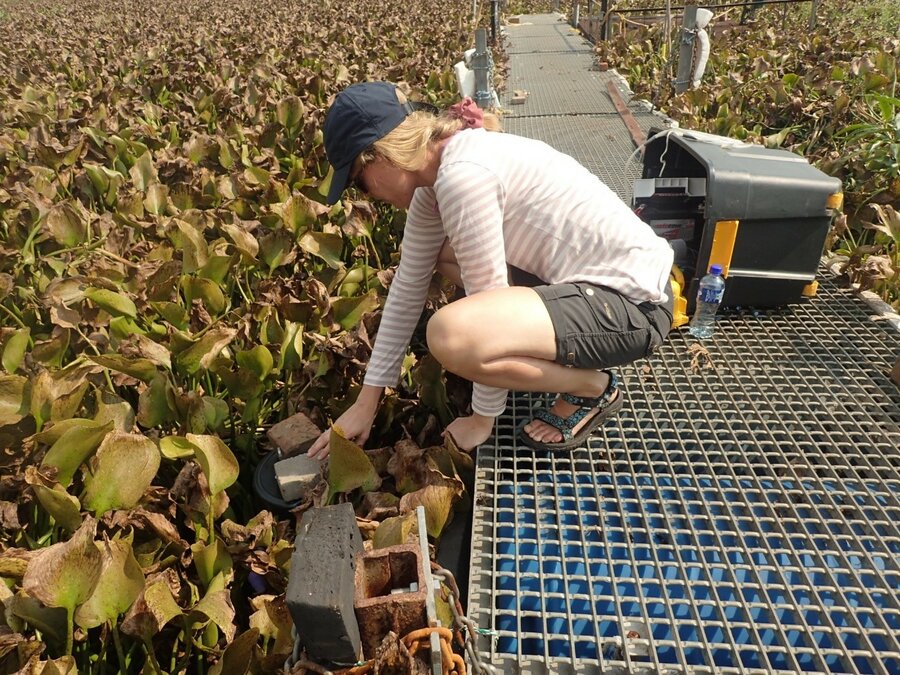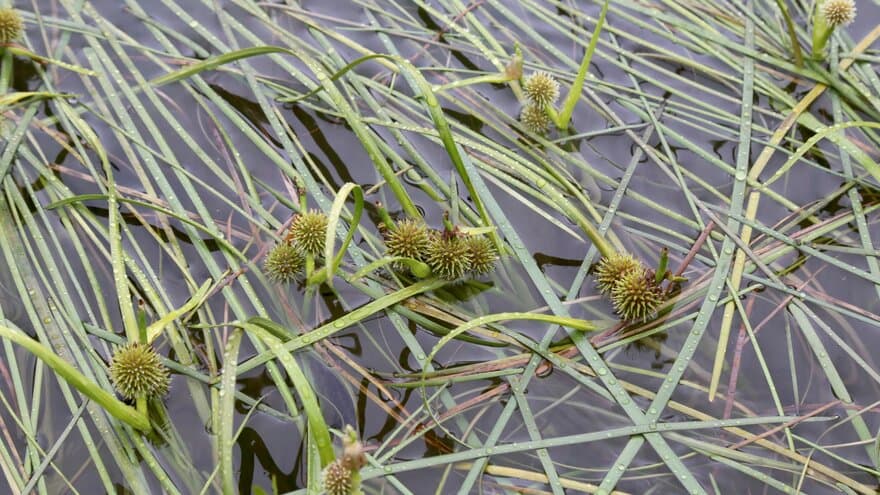Massive plant growth in freshwater systems can hinder human activities. Kirstine Thiemer’s PhD shows that both ecological and societal perspectives are important when managing freshwater ecosystems.
Freshwater ecosystems are important because they provide habitats for plants and animals that need permanent water - including fish. “Macrophytes” are aquatic plants growing in or near water. They may be either emergent (i.e., with upright portions above the water surface), submerged or floating.
Even though plants are essential parts of freshwater ecosystems, they can sometimes cause problems for humans when they become extensive in cover or density.
Costly problem
“Massive plant growths can interfere with many human activities, such as recreational swimming, boating or angling,” PhD candidate Kirstine Thiemer explains.
Extensive growth may also increase the risk of flooding of adjacent land or impede generation of hydroelectric power.
“Mass development is a worldwide problem and considerable resources are spent on every year on their removal,” she comments.

To remove or not to remove
Macrophytes are important in freshwater ecosystems as they provide and support a wide range of ecosystem services (i.e. benefits that human society obtain from nature), e.g. fish for food, clean water and climate change mitigation in form of carbon sequestration.
“If we remove these plants, we may also diminish some of these ecosystem services,” Thiemer says.
In her PhD thesis, Thiemer has examined both the ecological and societal aspects of macrophyte mass development and their removal.
Many discrepancies in existing research
Thiemer has examined previous research and found that there are many inconsistencies in the reported effects of removal of aquatic plants.
“Most studies only looked at the effects on one ecosystem property, e.g. fish or macroinvertebrates,” she says.
“There is a need for a more integrative approach to evaluate the consequences of macrophyte removal.
Removal affects fish behavior
She has evaluated what happens to fish behavior and the emission of greenhouse gasses when the underwater plant Juncus bulbosus is removed from a Norwegian river.
Fish for food and greenhouse gasses mitigation are two important ecosystem services that are provided and supported by macrophytes and there will potentially be negative effects for these when macrophytes are removed.
“In this experiment I tagged brown trout and recorded their movements before and after macrophyte removal using acoustic telemetry.”
The results showed that brown trout in general had preferences for habitats with low plant cover and this preference only got larger after removal.
“This may indicate that removal may provide desirable habitats for brown trout in ecosystem with very dense macrophyte cover” she says.
“These findings do however not mean that removal of macrophytes is always good for fish, as it likely to also depend on the initial densities of macrophytes in the systems before removal.”
“It is important to note that the overall effects sizes were small,” she comments.
Her study provides a template for using acoustic telemetry to study effects of macrophyte removal on behavioral patterns of fish, which can be useful to understand the relationship between plants and fish.

Effects on greenhouse gases
Thiemer has also examined the effects of plant removal on greenhouse gas emissions from shallow lakes.
“There was no universal response to macrophyte removal when comparing ecosystems where macrophytes with different life-forms were removed,” she says.
This suggests that in addition to macrophyte removal, macrophyte life-form and environmental conditions were also important factors determining the effects on greenhouse emission.
“The findings are important when managing lakes and rivers, managers need to consider potential increase in emission of greenhouse gasses after macrophyte removal which may depend on the macrophytes species removed and local environmental conditions.”
Considering both society and ecology
Understanding when macrophytes become a nuisance is an important aspect in management of freshwater ecosystem with mass developments. Especially if the management goal is to promote human recreational activities such as swimming, boating and angling.
Thiemer has examined when aquatic plants become a nuisance.
“Overall, perceived nuisance is strongly related to macrophyte growth level so the denser macrophytes are the more likely they are to be perceived as problematic.”
“Residents were more likely to perceive macrophytes as nuisance compared to visitors,” she says. The environmental mindedness of the respondents did not influence these opinions.
Thiemer’s findings are highly relevant for freshwater managers.
“I provide a basis for a decision support tool for water managers that both integrate the societal and ecological perspectives on macrophyte mass development and their removal.”
Kirstine Thiemer will defend her PhD thesis "Mass development of macrophytes – causes and consequences of macrophyte removal for ecosystem structure, function, and services" on the 23rd of September, 2022. Read more about that here:
